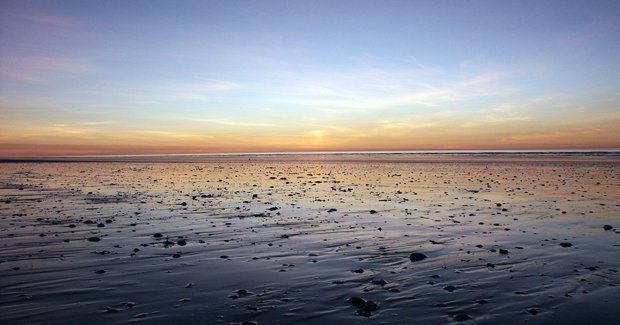Green groups criticise Kimberley marine parks

FOUR NEW MARINE PARKS, a new national park and a 200 km conservation corridor have been declared in the Kimberley, in a move described by the Western Australian Government as one of the most significant environmental initiatives in the State’s history.
“This is an extraordinary amount of new conservation and national parks, more than trebling the size of marine parks in Western Australia,” says Premier Colin Barnett. The Kimberley will have Australia’s second largest marine park in coastal waters behind the Great Barrier Reef Coast Marine Park, he says.
But environmental groups say the new marine parks – covering Eighty Mile Beach, Roebuck Bay, the north Kimberley coast and a whale-birthing haven at Camden Sound – are a farce, as they would still vulnerable to industry and the Kimberley coast not protected from petroleum exploration or commercial fishing.
The marine parks, which will cover 26,000 sq. km of ocean, are part of a Government science strategy to offset the emergence of oil and gas activity with conservation of Kimberley wilderness. The region’s first gas processing facility, a $30 billion Woodside LNG plant, is being mooted for a pristine coastal site near Broome.
98 per cent open to mining
Premier Barnett says the strategy is aimed at “protecting the natural character of the Kimberley wilderness for future generations.”
“Together, the four new marine parks will protect the largest Humpback whale calving area in the southern hemisphere, some of the nation’s largest mangrove communities, significant turtle nesting areas, extensive coral reefs, sponge gardens and the area’s outstanding scenic values.”
But conservation groups say only two sanctuary zones have been created within the marine parks, offering little real protection. “From what has been proposed, 98 percent of the Kimberley marine environment would be open to mining, oil and gas, fishing and other activities,” says Paul Gamblin, WWF-Australia’s WA director.
The WA Conservation Council’s director Piers Verstegen says only 13 percent of Camden Sound, where Humpback whales migrate to each year to give birth, will be fully protected from commercial activity. “This is like creating a national park on land where 90 per cent of its area is left open slather to the logging industry.”
But the State Government’s land-based parks have been welcomed by WWF. “It’s the government thinking at scale, and perhaps testing the water to see if there is strong community support for Kimberley conservation,” says Paul. “We clearly think there is.”
200-km conservation corridor
Land-based initiatives include the new Prince Regent National Park, a 634,000 ha biodiversity hotspot in the rugged northwest where half the Kimberley’s plant species are found.
It is home to significant animals like northern quolls, endangered golden-backed tree rats (Mesembriomys macrurus), scaly-tailed possums (Wyulda squamicaudata), a rare and elusive rough-scaled python (Morelia carinata) and the world’s smallest rock-wallaby, called the monjon (Petrogale burbidgei).
Work will also begin on creating a 200-kilometre long conservation corridor to connect Prince Regent National Park with another remote haven for rare species, Drysdale River National Park, which is accessible only to bushwalkers.
The Government’s Kimberley conservation package includes a $2.7 million investment in nature-based tourism for travellers along the popular Gibb River Road, with better visitor facilities planned for Geikie Gorge, Tunnel Creek and Windjana Gorge national parks.
RELATED STORIES

